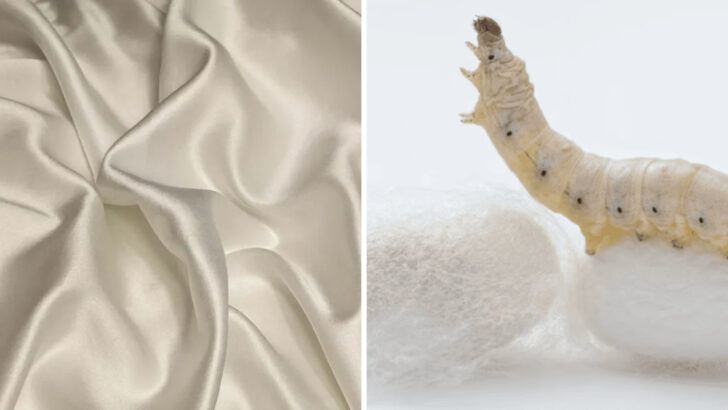Silk has captivated humanity for centuries with its luxurious texture and shimmering beauty. This remarkable fabric, produced by silkworms, holds a fascinating history and process. From its ancient origins in China to its global influence in the fashion industry, silk continues to mesmerize. Join us as we explore eleven intriguing truths about silk and the incredible journey from silkworm to fabric.
The Silkworm’s Secret
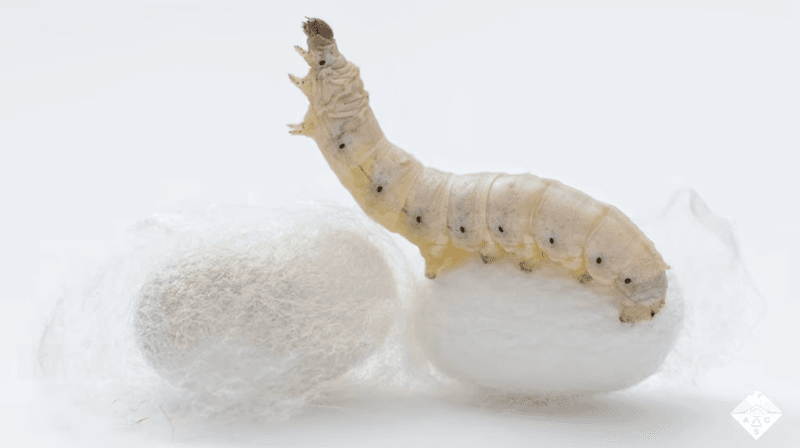
Imagine a creature so small yet capable of producing one of the world’s most luxurious materials. The silkworm, an unassuming caterpillar, spins silk through a marvel of nature. Silk production begins when these tiny creatures emit liquid silk from glands near their mouths. This liquid hardens into a single continuous thread as it exits the body. Silkworms produce up to 3,000 feet of silk fiber during their pupal phase! Did you know? The entire process of creating silk threads by the silkworm is natural and hasn’t changed over millennia. Nature’s design remains as flawless today as it was centuries ago.
China’s Ancient Craft

Step back in time to ancient China, where silk weaving was a closely guarded secret. The legendary Empress Leizu, credited with discovering silk, watched a silkworm cocoon unravel into a beautiful thread, inspiring the development of silk weaving. Silk became a cornerstone of Chinese economy and culture, symbolizing wealth and sophistication. For thousands of years, the techniques for silk production were carefully protected, traded only along the historic Silk Road. This precious fabric was China’s prized export. Silk’s journey from China to distant lands helped shape civilizations, weaving a legacy of elegance and luxury that endures today.
The Silk Road
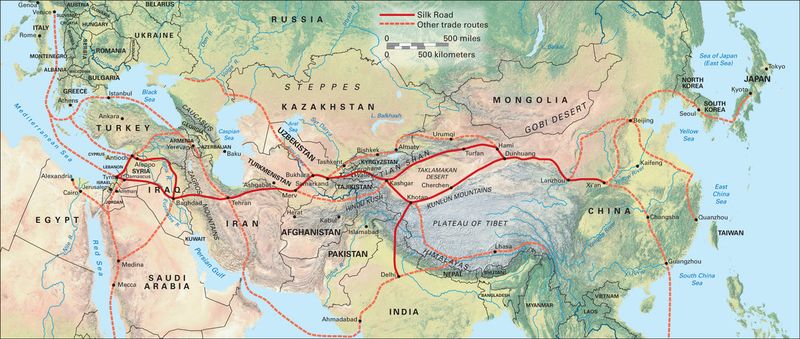
The Silk Road, a network of trade routes connecting East and West, played a crucial role in the spread of silk. Traders traversed harsh deserts and towering mountains, carrying silk alongside spices and other exotic goods. This ancient highway facilitated cultural exchange and economic growth. The journey was perilous, yet the rewards immense. Silk became synonymous with luxury and status in far-flung empires. The Silk Road’s influence extended beyond commerce; it fostered the sharing of ideas, art, and technology. Through silk, the world became interconnected, with its legacy echoing in modern globalization and intercultural understanding.
The Silkworm’s Lifecycle
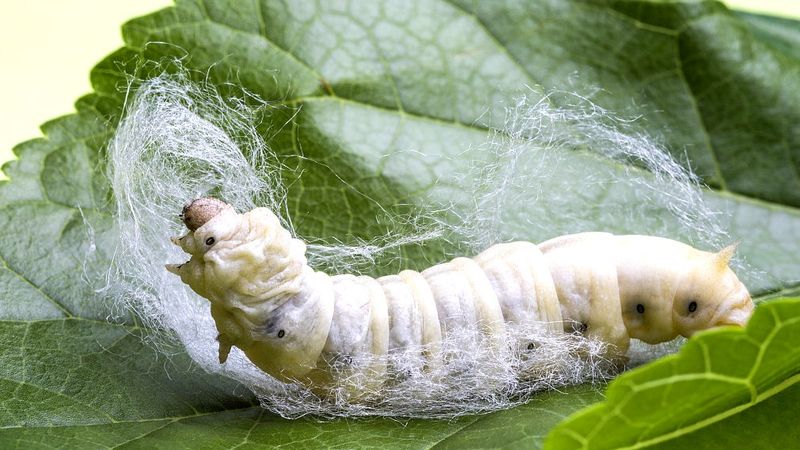
Embark on the silkworm’s lifecycle, a mesmerizing transformation from tiny egg to moth. The journey begins when female moths lay hundreds of eggs, hatching into voracious larvae. These caterpillars feast on mulberry leaves, growing rapidly as they prepare to spin their cocoons. Inside the cocoon, the silkworm metamorphoses into a moth, emerging after about two weeks. This cyclic process is a testament to nature’s ingenuity and the intricate balance of life. Silkworms’ transformation is not just a biological marvel but a critical phase in silk production, as the cocoon’s delicate threads become the raw material for exquisite fabrics.
Mulberry Leaves and Silk
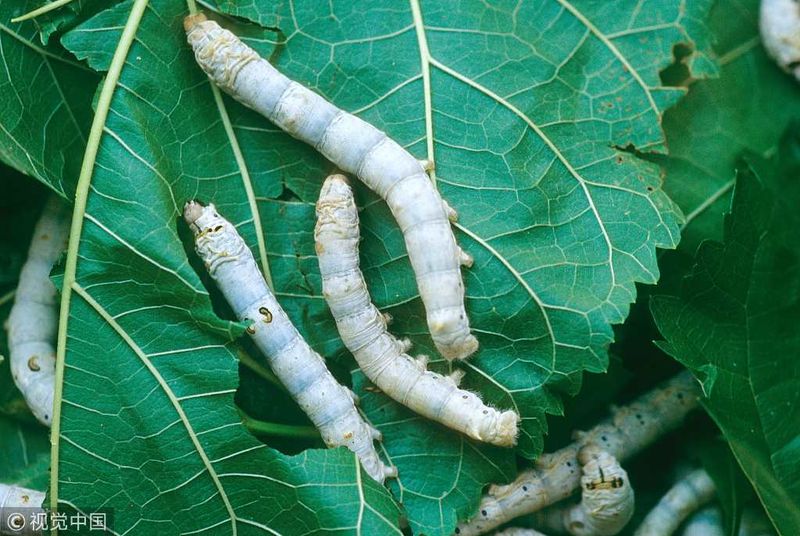
Mulberry leaves play a pivotal role in silk production, serving as the primary diet for silkworms. Without these nutrient-rich leaves, the quality of silk would diminish significantly. Silkworms feed exclusively on mulberry leaves, converting the nutrients into silk protein. The relationship between silkworms and mulberry trees is symbiotic, as the leaves provide the necessary sustenance for larvae to spin strong, lustrous silk threads. This delicate interplay highlights the importance of mulberry cultivation in silk farming. The quality of the leaves directly influences the fineness and sheen of the resulting silk, underscoring nature’s intricate design.
Silk’s Unique Properties
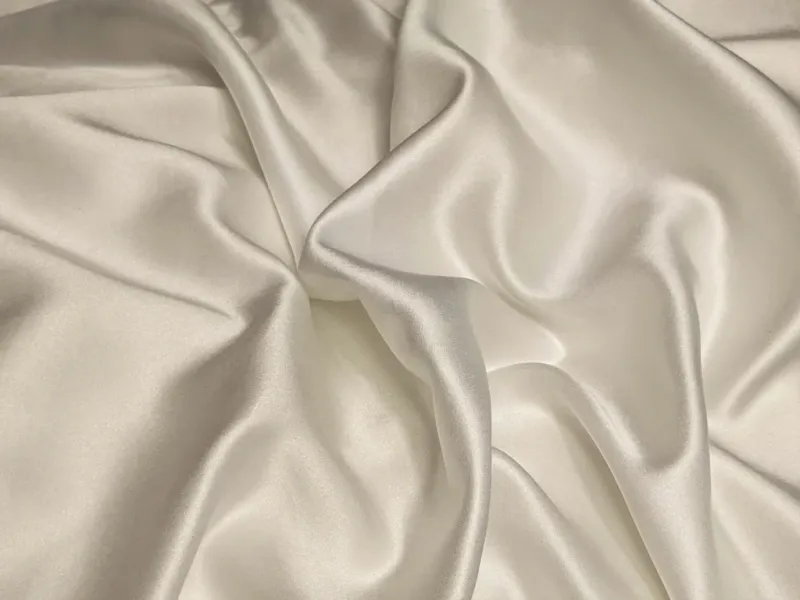
Silk, with its unique properties, stands out among natural fibers. Its smooth texture and lustrous sheen are unparalleled. Silk is not only beautiful but also incredibly strong, with a tensile strength comparable to steel. Its natural temperature-regulating ability makes it comfortable in both warm and cool climates. Unlike synthetic fibers, silk absorbs moisture, adding to its comfort. Its hypoallergenic nature makes it ideal for sensitive skin. These qualities have made silk a favorite for luxury garments and bedding. Silk’s timeless appeal lies in its ability to combine elegance with practicality, a rare blend in the textile world.
Silk in Fashion

Silk’s allure has made it a staple in high fashion, gracing runways and red carpets worldwide. Designers cherish its fluid drape and vibrant dye potential, allowing creativity to flourish. From delicate scarves to opulent gowns, silk is synonymous with elegance. Its versatility extends beyond clothing; silk has influenced home decor, accessories, and art. The fabric’s rich history and association with luxury continue to inspire designers and artists. Silk’s presence in fashion signifies the enduring relationship between tradition and innovation, as this timeless material adapts to contemporary trends while maintaining its regal essence.
Silk’s Environmental Impact

In recent years, the focus on sustainable silk production has intensified. Traditional methods often involve chemical treatments and intensive energy use, impacting the environment. However, eco-friendly practices are emerging, emphasizing organic mulberry cultivation and solar-powered facilities. These initiatives aim to reduce silk’s carbon footprint, balancing luxury with environmental responsibility. By supporting sustainable silk, consumers contribute to a greener future. The journey of silk from farm to fashion underscores the delicate balance between luxury and sustainability. As awareness grows, silk’s natural beauty may continue to thrive in harmony with the planet, aligning with conscious consumer values.
Silk’s Cultural Symbolism
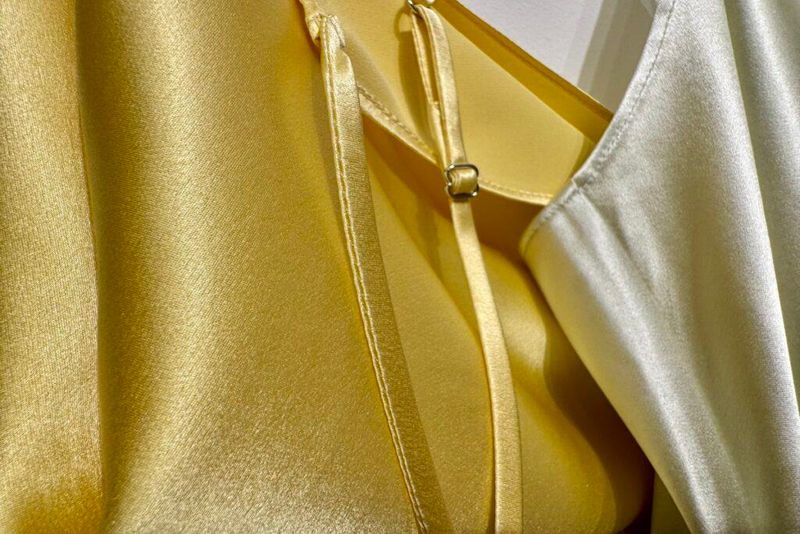
Silk’s cultural symbolism transcends borders, playing a vital role in traditions and ceremonies. In many Asian cultures, silk represents purity and prosperity, often used in weddings and religious rituals. Its luxurious texture and vibrant colors are associated with celebration and reverence. Beyond fashion, silk symbolizes historical ties and cultural identity. Its presence in art and literature highlights its enduring influence. Whether as a wedding dress or a ceremonial robe, silk embodies a rich tapestry of cultural narratives. This fabric’s ability to convey deep meaning across diverse cultures highlights its unique place in human history.
Silk’s Scientific Exploration
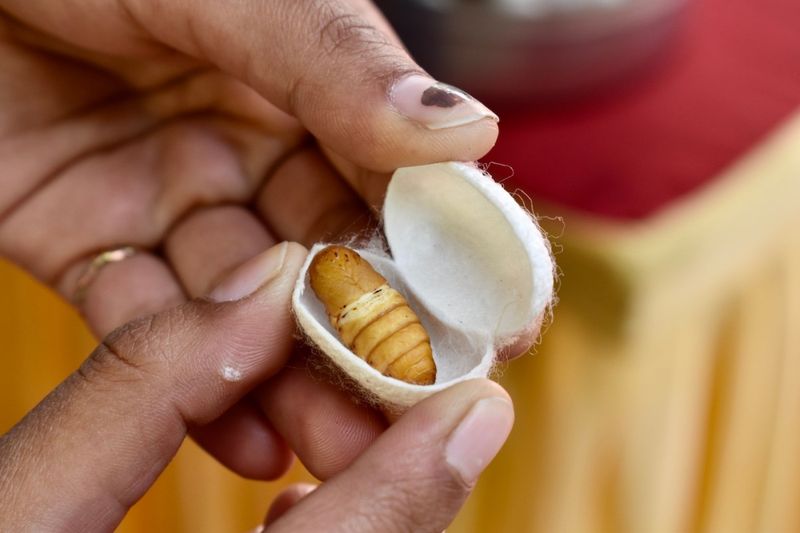
The scientific exploration of silk extends beyond textiles, with researchers investigating its molecular structure for innovative applications. Silk’s biocompatibility and biodegradability have led to advancements in medical technology, such as sutures and tissue engineering. Its strength and light weight inspire developments in aerospace and material science. The study of silk reveals a world of possibilities, bridging the gap between nature and technology. Researchers continue to unlock silk’s potential, transforming it from a luxurious fabric into a versatile material with diverse applications. This exploration underscores the endless curiosity and innovation that silk inspires.
Silk’s Future Innovations
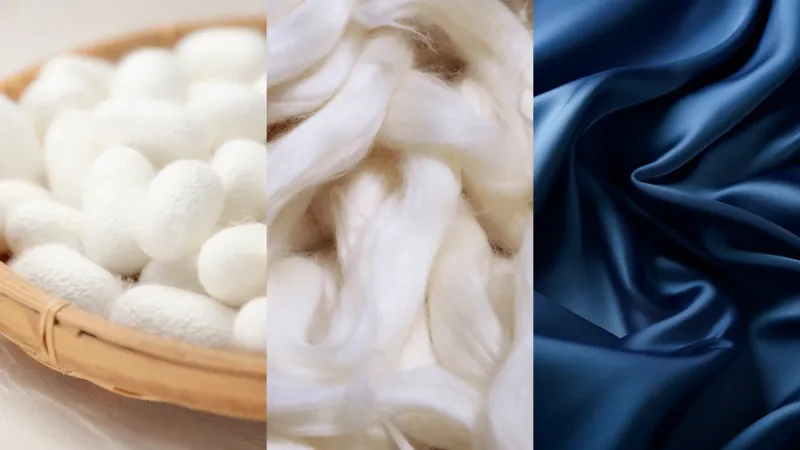
As technology evolves, so does the potential for silk innovation. Scientists and designers are exploring silk’s role in smart fabrics and wearable tech. Silk’s natural properties, combined with modern technology, lead to textiles that change color or monitor health. These innovations transform silk from a traditional luxury to a futuristic tool. The intersection of silk with technology illustrates the fabric’s adaptability and potential to redefine modern living. As research progresses, silk may become integral to everyday life, merging style with function in unprecedented ways. The future of silk promises a seamless blend of tradition, innovation, and elegance.

